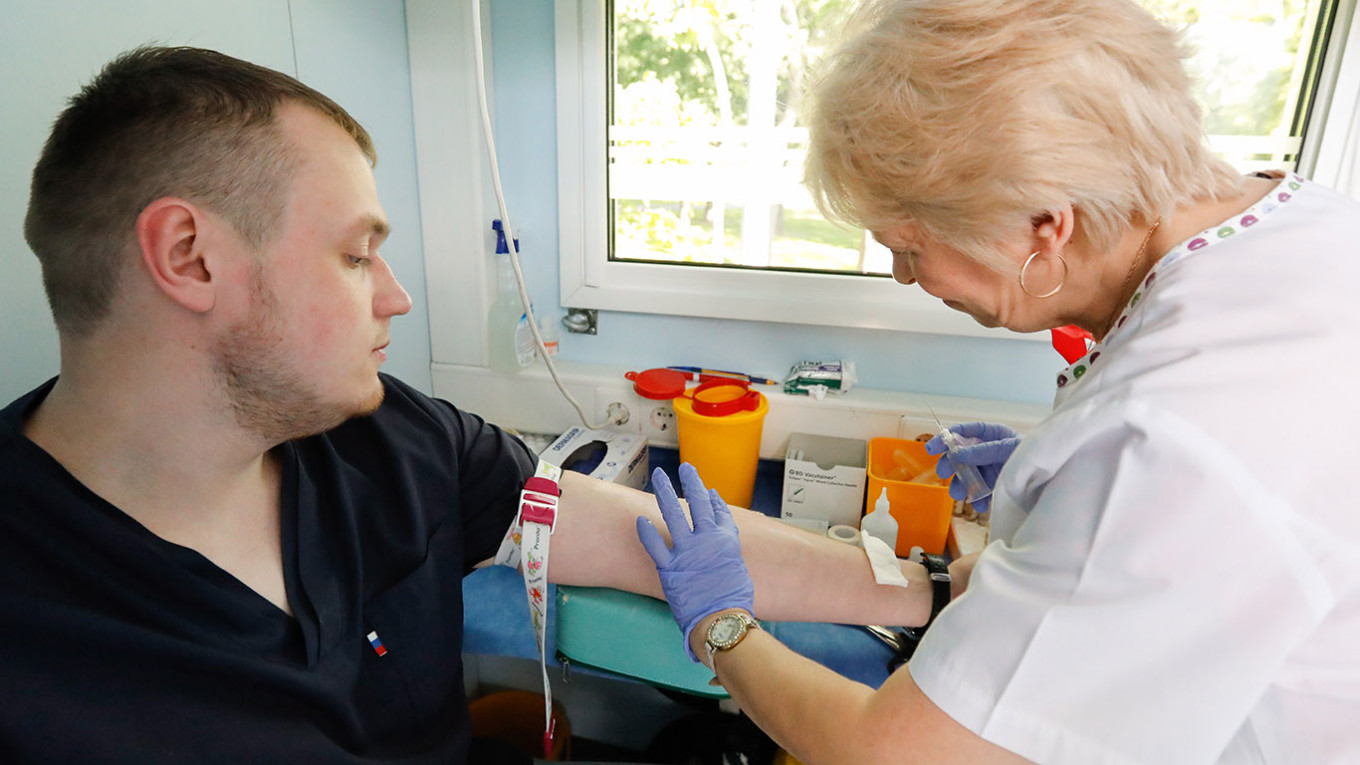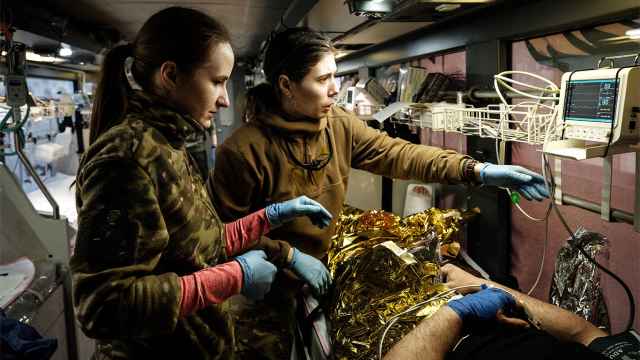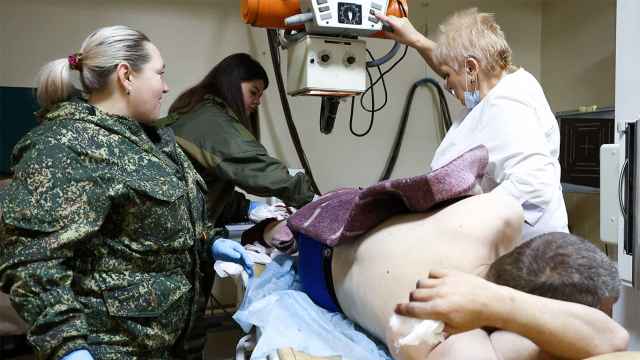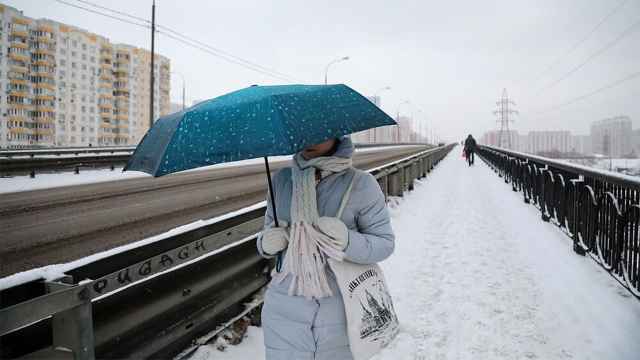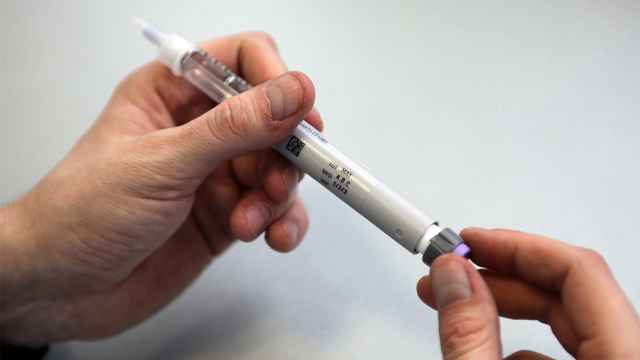Russia’s HIV statistics and dynamics were far from encouraging long before the full-scale invasion of Ukraine. But the war has dramatically worsened the situation. In the first year of the war, according to Defense Ministry data, the recorded incidence of HIV among military personnel soared by more than 40 times.
The demographic and economic losses Russia will suffer as a result of this outbreak will have repercussions for decades and may ultimately even exceed the damage it has sustained from its invasion of Ukraine.
The number of people living with HIV in Russia passed the 1 million mark back in 2016. That’s almost 1% of the population, or about 1.5-2% of working age people and does not include those who simply did not get tested.
Even at that stage, the epidemic could still have been brought under control. There is a vast accumulated experience of fighting HIV around the world. Had there been the political will, it would have been enough to increase the Health Ministry’s budget for tackling the spread of HIV and to introduce proven methods of prevention instead of relying on outdated and harmful ideas about family life and “moral staples.” But with the full-scale invasion of Ukraine, the situation in Russia has only gotten far worse.
Modern antiretroviral therapy (ART), which is prescribed to every person newly diagnosed with HIV for the rest of their life, is not cheap. Even before the war, only a few wealthy regions could afford to fully finance it for all who needed it. The Health Ministry tried to switch to cheaper domestic generics of Western drugs to cut the costs, but HIV organizations were already reporting disruptions in the availability of essential drugs even before the war. Now wartime priorities have exacerbated that problem. The proportion of HIV patients receiving treatment has now fallen below 50% in Russia for the first time in many years.
The wartime wave of repression against civil society proved to be the final nail in the coffin of Russia’s already weak system of assistance for people living with HIV. The Elton John Foundation, the world’s largest sponsor of NGOs working in the field of HIV, was declared an “undesirable organization,” forcing Russian organizations to stop any cooperation with it. Furthermore, the designation of LGBTQ+ people as an “extremist movement” has further increased the cross-stigma around both the gay community and the issue of HIV.
However, the greatest impact has been caused by the war itself. Epidemiologists say that the risks of HIV spreading at the front increase with blood transfusions and the reusing of syringes in field hospitals.
People who take ART every day are no longer infectious, but when soldiers are living in trenches in conditions of round-the-clock shelling, the uninterrupted supply and administration of ART is hardly realistic. Meanwhile, irregular treatment is even worse than no treatment at all, since it can cause the virus to become drug-resistant and get passed on in that new mutation.
The problem is so grave that it has been officially acknowledged even by Defense Ministry doctors. The number of new HIV cases detected in the Armed Forces grew fivefold from the first quarter of 2022 to the fall of the same year. By the end of 2022, it had increased by 13 times. And by the beginning of 2023, peak growth was recorded at more than fortyfold. By the end of that same year, the HIV detection rate among military personnel was about 20 times higher than before the war.
Such high transmission rates can be explained by the fact that HIV is not just passed on in war through wounds and their treatment. The two more traditional transmission channels — unprotected sexual contact (including with sex workers) and sharing needles to inject drugs — have not disappeared. On the contrary, according to independent journalists, both are thriving in an army of men who are earning decent money and live every day as if it were their last.
Despite the surge in HIV cases in the Russian armed forces, testing positive for the disease is still officially cause for being declared unfit to serve in the military. At the conscription stage, this rule is generally followed. There have been reports of draftees buying fake certificates for positive HIV and hepatitis tests in order to avoid being sent to the front.
At the front itself, however, these rules are no longer so closely observed. Independent media and social media are full of stories of commanders on the ground refusing to let soldiers leave the front, no matter what condition they are in, because manpower is in short supply.
Worst of all, no epidemiologist is prepared to say that the explosion in new HIV cases is confined to the military and that it is caused by army-specific factors. The dynamics among the rest of the population could be just as bad. The rise may have been spotted because military personnel, along with pregnant women, migrants and professionals, including pilots and chefs who are subject to mandatory HIV testing.
One Russian publication reported that in 14 Russian regions, the proportion of pregnant women testing positive for HIV is now regularly more than 1%. That, according to World Health Organization (WHO) standards, is another symptom of the transition to a generalized HIV epidemic, when there is no longer any point in talking about “at-risk groups” in that particular country.
According to UNAIDS, Russia has been among the top five countries in terms of new HIV cases since 2022, accounting for 3.9% of the 1.5 million new infections worldwide. Only South Africa (14% of all new cases), Mozambique (6.5%), Nigeria (4.9%) and India (4.2%) have more new cases, and the latter two have significantly larger populations than Russia.
There are no signs yet that this dynamic will start to change anytime soon. The Russian Health Ministry predictably dismissed the UNAIDS data as propaganda.
Russia is suffering an epidemic at a time when HIV has long been declining around the world as a whole. According to UNAIDS, the number of new cases detected peaked in the mid-1990s and has since more than halved thanks to prevention and the spread of ART, which allows HIV positive people to live a normal life and remain noninfectious when taken continuously. Meanwhile, Russia continues to record 50,000-100,000 new cases of HIV every year.
In the United States, a vaccine that offers more than 90% protection against HIV transmission for a period of six months recently passed the final stage of clinical trials. Those living with HIV are now offered the fourth generation of ART. Instead of having to take one pill a day, they are given injections every few months.
Even without medical breakthroughs, HIV is destined to stop being a significant medical problem in many countries in our lifetimes. The WHO developed the 90-90-90 strategy long ago to combat the epidemic even without vaccines and effective drugs. If at least 90% of people living with HIV know about their diagnosis, and 90% of them are under consistent treatment, and if that treatment works for 90% of those taking it, the spread of the virus will stop almost completely.
The life expectancy of HIV positive people receiving treatment now actually slightly exceeds that of people without HIV, thanks to more intensive medical observation. That means that by the second half of the 21st century, when most of today’s HIV positive people will have died a natural death, the disease will effectively disappear. Even in sub-Saharan Africa, the number of new cases fell by more than 20% in the 2010s, and the number of deaths by almost 40%.
The HIV situation is improving everywhere in the world except for one region, according to the WHO: Central and Eastern Europe. Russia ranks first in Europe in terms of the proportion of the population living with HIV, at 1.5% of people, followed by Ukraine with 1.1%.
There is no objective reason why HIV should be decreasing across the world except in Russia. The factors behind this are purely political.
Russia is the last major country in the world to continue to insist on a total ban on substitution therapy (such as methadone) for drug users under medical supervision. Clinical research and WHO recommendations clearly indicate that substitution therapy can at least reduce the harm associated with drugs, including the spread of HIV.
No less harmful is the ban on sex education in schools, where young people could be taught about the importance of contraception and undergoing testing for sexually transmitted diseases.
Those who have contracted HIV during Russia’s war against Ukraine will need expensive lifelong treatment, not only for their own sake, but also to reduce the risk of the epidemic spreading further. This will be a burden on the Russian budget and healthcare system and a blow to the labor market and demography throughout the next 50 years of the 21st century — long after the war in Ukraine and Vladimir Putin’s rule come to an end.
A version of this article was originally published by the Carnegie Endowment for International Peace.
A Message from The Moscow Times:
Dear readers,
We are facing unprecedented challenges. Russia's Prosecutor General's Office has designated The Moscow Times as an "undesirable" organization, criminalizing our work and putting our staff at risk of prosecution. This follows our earlier unjust labeling as a "foreign agent."
These actions are direct attempts to silence independent journalism in Russia. The authorities claim our work "discredits the decisions of the Russian leadership." We see things differently: we strive to provide accurate, unbiased reporting on Russia.
We, the journalists of The Moscow Times, refuse to be silenced. But to continue our work, we need your help.
Your support, no matter how small, makes a world of difference. If you can, please support us monthly starting from just $2. It's quick to set up, and every contribution makes a significant impact.
By supporting The Moscow Times, you're defending open, independent journalism in the face of repression. Thank you for standing with us.
Remind me later.


